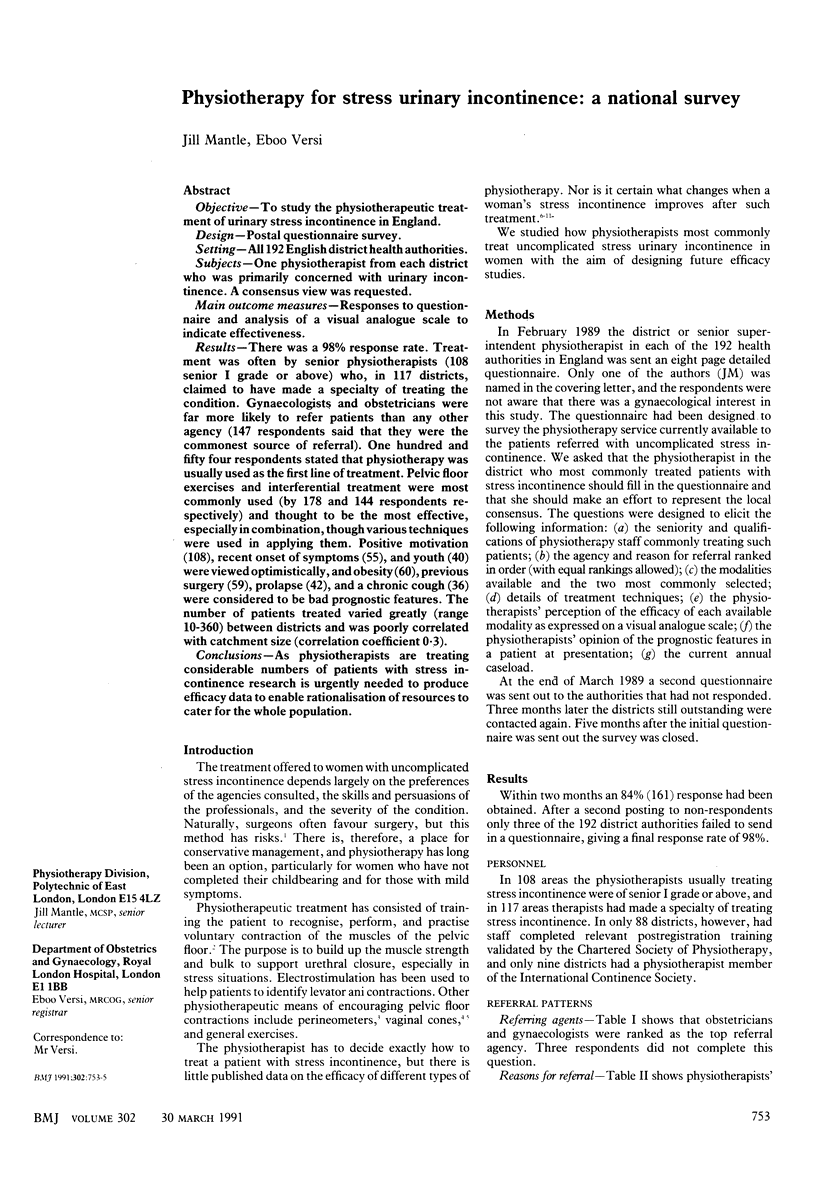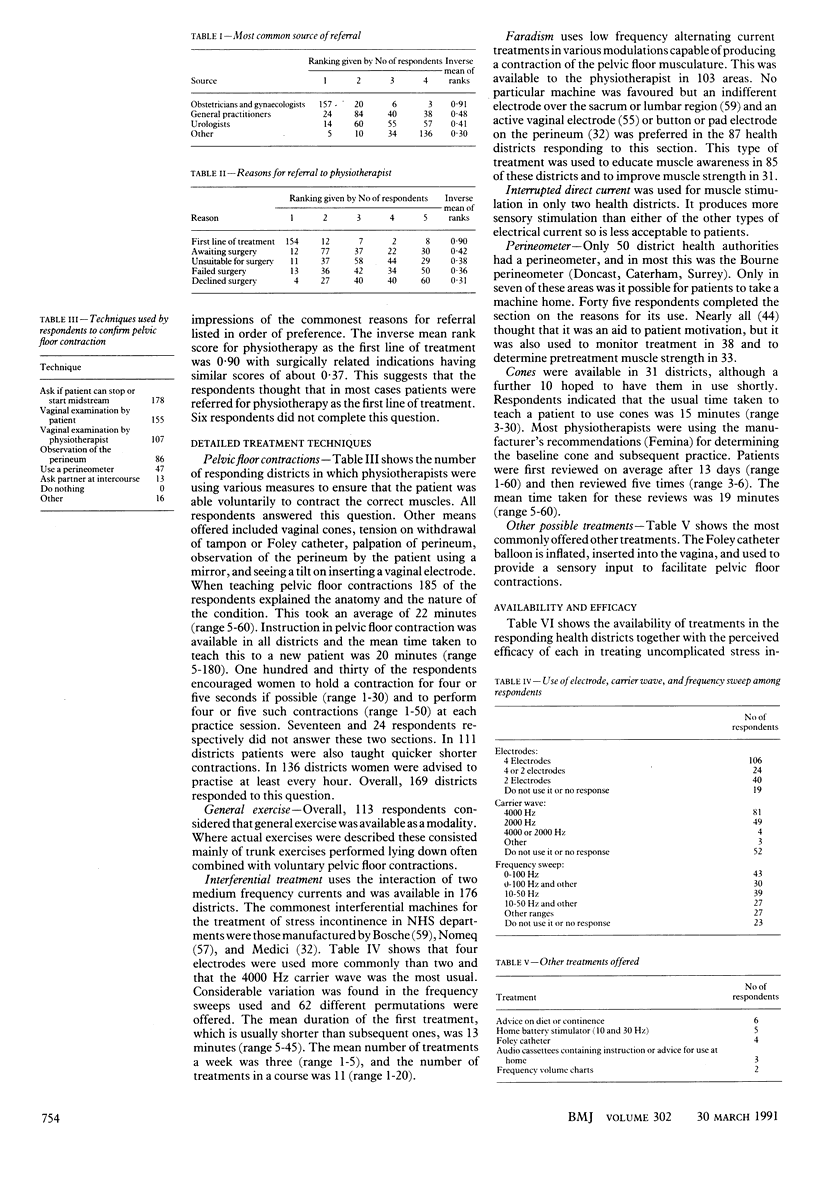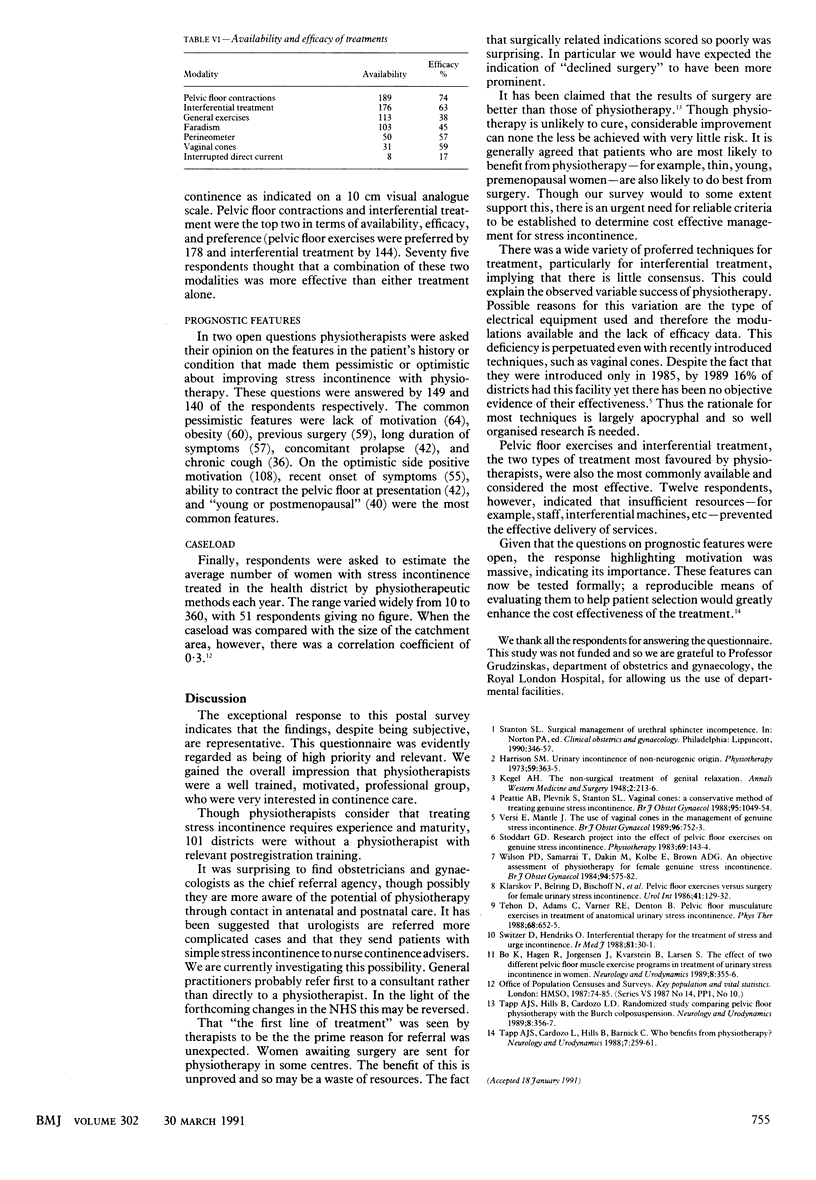Abstract
OBJECTIVE--To study the physiotherapeutic treatment of urinary stress incontinence in England. DESIGN--Postal questionnaire survey. SETTING--All 192 English district health authorities. SUBJECTS--One physiotherapist from each district who was primarily concerned with urinary incontinence. A consensus view was requested. MAIN OUTCOME MEASURES--Responses to questionnaire and analysis of a visual analogue scale to indicate effectiveness. RESULTS--There was a 98% response rate. Treatment was often by senior physiotherapists (108 senior I grade or above) who, in 117 districts, claimed to have made a specialty of treating the condition. Gynaecologists and obstetricians were far more likely to refer patients than any other agency (147 respondents said that they were the commonest source of referral). One hundred and fifty four respondents stated that physiotherapy was usually used as the first line of treatment. Pelvic floor exercises and interferential treatment were most commonly used (by 178 and 144 respondents respectively) and thought to be the most effective, especially in combination, though various techniques were used in applying them. Positive motivation (108), recent onset of symptoms (55), and youth (40) were viewed optimistically, and obesity (60), previous surgery (59), prolapse (42), and a chronic cough (36) were considered to be bad prognostic features. The number of patients treated varied greatly (range 10-360) between districts and was poorly correlated with catchment size (correlation coefficient 0.3). CONCLUSIONS--As physiotherapists are treating considerable numbers of patients with stress incontinence research is urgently needed to produce efficacy data to enable rationalisation of resources to cater for the whole population.
Full text
PDF


Selected References
These references are in PubMed. This may not be the complete list of references from this article.
- Harrison S. M. Urinary incontinence of non-neurogenic origin. Physiotherapy. 1973 Nov 10;59(11):363–365. [PubMed] [Google Scholar]
- Klarskov P., Belving D., Bischoff N., Dorph S., Gerstenberg T., Okholm B., Pedersen P. H., Tikjøb G., Wormslev M., Hald T. Pelvic floor exercise versus surgery for female urinary stress incontinence. Urol Int. 1986;41(2):129–132. doi: 10.1159/000281181. [DOI] [PubMed] [Google Scholar]
- Peattie A. B., Plevnik S., Stanton S. L. Vaginal cones: a conservative method of treating genuine stress incontinence. Br J Obstet Gynaecol. 1988 Oct;95(10):1049–1053. doi: 10.1111/j.1471-0528.1988.tb06512.x. [DOI] [PubMed] [Google Scholar]
- Tchou D. C., Adams C., Varner R. E., Denton B. Pelvic-floor musculature exercises in treatment of anatomical urinary stress incontinence. Phys Ther. 1988 May;68(5):652–655. doi: 10.1093/ptj/68.5.652. [DOI] [PubMed] [Google Scholar]
- Versi E., Mantle J. Vaginal cones: a conservative method of treating genuine stress incontinence. Br J Obstet Gynaecol. 1989 Jun;96(6):752–753. doi: 10.1111/j.1471-0528.1989.tb03306.x. [DOI] [PubMed] [Google Scholar]
- Wilson P. D., Al Samarrai T., Deakin M., Kolbe E., Brown A. D. An objective assessment of physiotherapy for female genuine stress incontinence. Br J Obstet Gynaecol. 1987 Jun;94(6):575–582. doi: 10.1111/j.1471-0528.1987.tb03153.x. [DOI] [PubMed] [Google Scholar]


